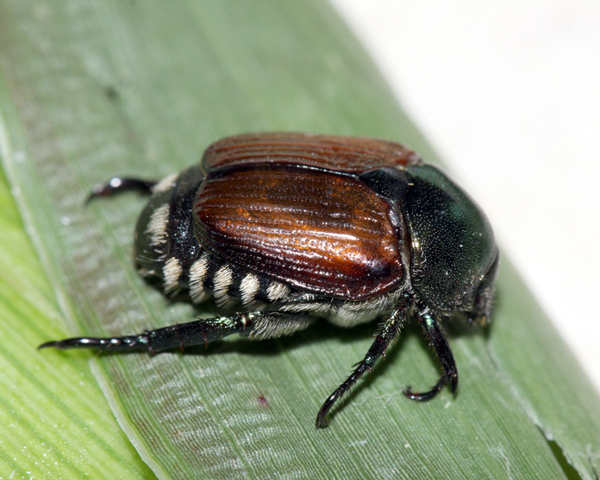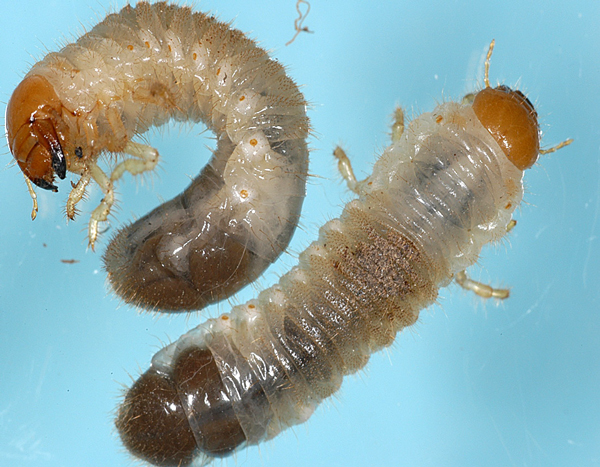Adult Japanese beetles (Figure 1) have been creating concern for corn producers in the eastern third of the state for the last couple of weeks. They are a concern, based upon timing, because they are strongly attracted to fresh corn silks. These beetles are relatively voracious feeders and can chew off silks almost as fast as they can grow out, especially if there are several beetles feeding/ear right at the critical time of pollination shed. However, they are often only on the side of the field closest to where the larvae were feeding. The larvae are white grubs (Figure 2) that feed on the roots of many different plants, often turf grass, or some other perennial.
Adult beetles have a wide host range and may feed on the nectar and pollen from many flowers, or fruits (pears, apples, grapes, etc.). However, they can also be attracted to young succulent soybean leaves and pods and therefore may cause concern because of the defoliation. Again, most of this defoliation is on one side of the field, or in small areas. However, soybeans are very resilient at compensating for defoliation up to about 50-60%, during vegetative stages.
Japanese beetles are migrating west across Kansas and caused concern in 2022 as far west as Saline and Republic counties. Westward migration is continuing. If you notice Japanese beetles in a field, please monitor the entire field for infestation as they do tend to aggregate on the side closest to where the grubs fed.

Figure 1. Adult Japanese beetle. Photo by K-State Entomology.

Figure 2. Japanese beetle larvae (white grubs). Photo by K-State Entomology.
Jeff Whitworth, Extension Entomologist
jwhitwor@ksu.edu
Tags: insects Japanese beetles